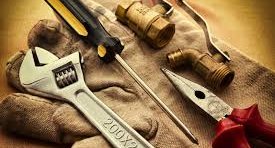My Plate Heat Exchanger Just...Won't...Seal
Two seasoned maintenance technicians, we'll call them Hank and Barry, were assigned the task of swapping out a plate pack on a plate heat exchanger. It was time to recondition the existing plates. The job was to open the heat exchanger, remove the existing plates, and install a new set of plates. Generally speaking, this is one of the easiest maintenance tasks to perform on a plate heat exchanger.....but even this task can go wrong.
Hank and Barry didn't have any experience working on a plate heat exchanger. But, they installed the plates correctly by simply looking at how the existing plates were installed so that were confident that the job would go smoothly. They tightened the unit back to the correct dimension as before, but something went wrong.
The plate pack had just a little bit of a "wavy" pattern in it. The plates just weren't aligned quite right and the unit leaked at start up. The leak wasn't terribly bad, but any leaking was unacceptable and a solution had to be found.
Hank and Barry opened the unit and tried to tighten it again and again. In retrospect, however, the damage was done. While not witnessed first hand, the suspected cause of the problem was the during the initial tightening, the movable rear plate just wasn't kept square enough and it's likely that the bottom was tightened too far ahead of the top at some point. The result was that the carrying bar had been bent enough that the plates just couldn't stay aligned no matter how careful they were on subsequent attempts.
Luckily for Hank and Barry, their plate heat exchanger utilized a bolted carrying bar construction. The carrying bar was unbolted from the frame and the damaged area was moved from the fixed end (front) to the movable end (rear) as shown here:
This effectively moved the damaged portion to the back where the plates were no longer dependent on the damaged area to provide proper alignment. The result was that Hank and Barry were given another shot to tighten their heat exchanger nice and evenly. This time, they were determined to get it right. Here's the result:
By flipping the carrying bar, using some lubrication on the top and bottom bars, and tightening the unit slowly and evenly, the unit stay perfectly aligned. All of the plates sealed properly and Hank and Barry hit the break room with a new war story to share with friends.
Now, while Hank and Barry managed to bend their carrying bar, this wasn't entirely their fault. The particular carrying bar was flared at the bottom:
This flared bar design, while not terrible, is also not ideal. We have to remember that not everyone who tries to work on plate heat exchangers are experts. This is why a solid round bar or a solid "T" profile make a much more robust design:
A solid carrying bar, combined with a five point alignment system as shown here, makes it much more difficult to deform the carrying bar and makes it much easier to keep the plates and gaskets aligned properly.
While Hank and Barry's story had a positive outcome, merely flipping the carrying bar over can have consequences too. If they ever need to add plates to their heat exchanger in the future, then the damaged portion of the carrying bar will once again cause issues. But, they now have time to order a replacement carrying bar, while their plant is back up and running. Hank and Barry needed to borrow some time while a permanent fix could be instituted. We found that time with a flip of the bar.







Commenti
Posta un commento